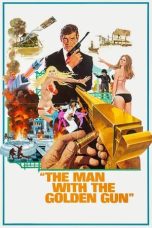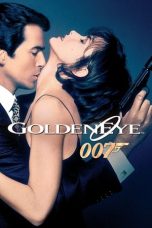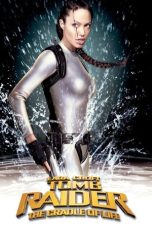- Source: Golden Urn
The Golden Urn is a method introduced by the Qing dynasty of China in 1793 for selecting Tibetan reincarnations by drawing lots or tally sticks from a golden urn. After the Sino-Nepalese War, the Qianlong Emperor promulgated the 29-Article Ordinance for the More Effective Governing of Tibet, which included regulations on selecting lamas. The Golden Urn was ostensibly introduced to prevent cheating and corruption in the process but it also positioned the Qianlong Emperor as a religious authority capable of adducing incarnation candidates. A number of lamas, such as the 8th and 9th Panchen Lamas and the 10th Dalai Lama, were confirmed using the Golden Urn. In cases where the Golden Urn was not used, the amban was consulted. Lhamo Dhondup was exempted from the Golden Urn to become the 14th Dalai Lama in 1940.
History
= Qing dynasty
=The Golden Urn originated in a 1792 decree by the Qianlong Emperor, after the Qing victory in the Second Invasion of the Sino-Nepalese War. Article One of the decree, the 29-Article Ordinance for the More Effective Governing of Tibet, was designed to be used in selecting rinpoches, lamas, and other high offices in Tibetan Buddhism, including the Dalai Lamas, Panchen Lamas, and Mongolian lamas. In Qianlong Emperor's article The Discourse of Lama (Chinese: 喇嘛说), also published in 1792, he explained the history of lamas and the reincarnation system, argued that the reincarnation system is man-made, and created rules to eliminate the system's drawbacks.
The 29-Article Ordinance for the More Effective Governing of Tibet allows the Qing emperors of China to control the selection process to prevent Mongol and Tibetan nobles from taking advantage of it to seize religious power and to prevent lamas from combining with secular forces.
The Qianlong Emperor issued two Golden Urns. One is enshrined in Jokhang Temple in Lhasa and is to be used for choosing Dalai and Panchen Lama reincarnations; the other is in Yonghe Temple in Beijing for choosing Mongolian Lama, known as Jebtsundamba Khutughtu, reincarnations.
The specific ritual to be followed when using the Golden Urn was written by the 8th Dalai Lama, Jamphel Gyatso. The names and dates of birth of each candidate were to be written in the Manchu, Han, and Tibetan languages on metal or ivory slips and placed in the urn. After prayers before the statue of the Jowo in the Jokhang temple in Lhasa, a slip was drawn. The 7th Panchen Lama, Palden Tenpai Nyima, used the Golden Urn for the first time in 1822 to choose the 10th Dalai Lama, Tsultrim Gyatso.
= Republic of China
=On 12 August 1927, the Central Government mandated that before the publication of new laws, all laws regarding Tibetan Buddhism should continue unless they conflicted with new doctrine or new laws of the Central Government.
In August 1929, the Supreme Court of the Central Government ruled that before the publication of new laws, preexisting laws about Tibet and the reincarnation of rinpoches or lamas applied.
In 1935, the Central Government of China published the Ordinance of Lama Temple Management (Chinese: 管理喇嘛寺廟條例). Article 2 states that reincarnated lamas are limited to those who were reincarnated previously, unless approved by the Central Government. Article 5 states that all monasteries, temples, and lamas must register with the Mongolian and Tibetan Affairs Commission. Article 7 states that the Mongolian and Tibetan Affairs Commission shall draft the methods of lamas' reincarnation, appointment, rewards and punishments, registration, etc., and submit them to the Executive Yuan for approval.
In 1936, based on articles 2 and 7 of the Ordinance of Lama Temple Management (Chinese: 管理喇嘛寺廟條例), the Mongolian and Tibetan Affairs Commission published the Method of Reincarnation of Lamas (Chinese: 喇嘛轉世辦法).
Article 3 states that the death of lamas including the Dalai Lama and the Panchen Lama should be reported to Mongolian and Tibetan Affairs Commission, soul boys should be found, reported to and checked by Mongolian and Tibetan Affairs Commission, and a lot-drawing ceremony with the Golden Urn system should be held. Article 6 states that local governments should invite Central Government officials to take care of the sitting-in-the-bed ceremony. Article 7 states that soul boys should not be searched for from current lama families.
The Method of Reincarnation of Lamas (Chinese: 喇嘛轉世辦法) was abolished in 2004.
= People's Republic of China
=In 2004, the Central Government published the Religious Affairs Regulations (Chinese: 宗教事务条例). Article 36 states that the reincarnation system must follow religious rituals and historical customs and be approved by the government.
In 2007, the Central Government published the State Religious Affairs Bureau Order No. 5 (Chinese: 国家宗教事务局令第5号). Article 7 states that no group or individual may carry out activities related to searching for and identifying the reincarnated soul boy of the Living Buddha without authorization.
Article 8 states that a lot-drawing ceremony with the Golden Urn is applicable to rinpoches or lamas reincarnated previously in history. The State Administration for Religious Affairs handles requests for exemption, and the State Council handles requests for exemptions that would have significant impact.
Usage
= Dalai Lamas born after 1792
== Panchen Lamas born after 1792
=Gedhun Choekyi Nyima was appointed by the 14th Dalai Lama as the 11th Panchen Lama on May 14, 1995; this appointment was disputed by the Chinese Communist central government, which removed Gedhun Choekyi Nyima as Panchen Lama and instead held a ceremony later that year in which Gyaincain Norbu was appointed the 11th Panchen Lama. The legitimacy of this appointment has been disputed by a number of sources.
= Mongol Lamas born after 1642
=When the People's Republic of China annexed Tibet, Lozang Penden Tenpé Drönmé escaped to Taiwan. It has been reported that before his death in 1957 he had signed a pledge that he would not reincarnate until the Republic of China retook the mainland. However, the Dalai Lama recognised the current incarnation, Tendzin Dönyö Yéshé Gyatso, on 11 August 1998. He was born in 1980 in Tsongkha, was ordained at an early age and came to India as a refugee in 1998. He is now residing in the re-established Drepung Monastery, in India. Neither he nor two other claimants to be the current Changkya are recognised by either Taipei or Beijing.
See also
29-Article Ordinance for the More Effective Governing of Tibet
The Discourse of Lama
Sino-Nepalese War
Notes
References
Foster, Simon (2008). Adventure Guide China. Hunter. ISBN 978-1-58843-641-2.
Goldstein, Melvyn C. (18 June 1991). A History of Modern Tibet, 1913-1951: The Demise of the Lamaist State. University of California Press. ISBN 978-0-520-91176-5.
Goldstein, Melvyn C. (1997). The Snow Lion and the Dragon: China, Tibet, and the Dalai Lama. University of California Press. ISBN 0-520-21951-1.
Oidtmann, Max (2018). Forging the Golden Urn: The Qing Empire and the Politics of Reincarnation in Tibet. New York: Columbia University Press.
Smith, Warren W. Jr. (1997). Tibetan Nation: A History Of Tibetan Nationalism And Sino-Tibetan Relations. Westview Press. ISBN 978-0-8133-3280-2.
Kata Kunci Pencarian:
- God of War II
- Sawo duren
- Narsis
- Sirih gading emas
- Tulip
- Kacapiring (bunga)
- Tusam (umum)
- Padi
- Paku laut
- Apel
- Golden Urn
- Succession of the 14th Dalai Lama
- Dalai Lama
- 14th Dalai Lama
- State Religious Affairs Bureau Order No. 5
- Gyaincain Norbu
- 11th Panchen Lama controversy
- Diki Tsering
- Patroclus
- Panchen Lama
Resident Evil (2002)
Live and Let Die (1973)
Lara Croft: Tomb Raider – The Cradle of Life (2003)
No More Posts Available.
No more pages to load.










